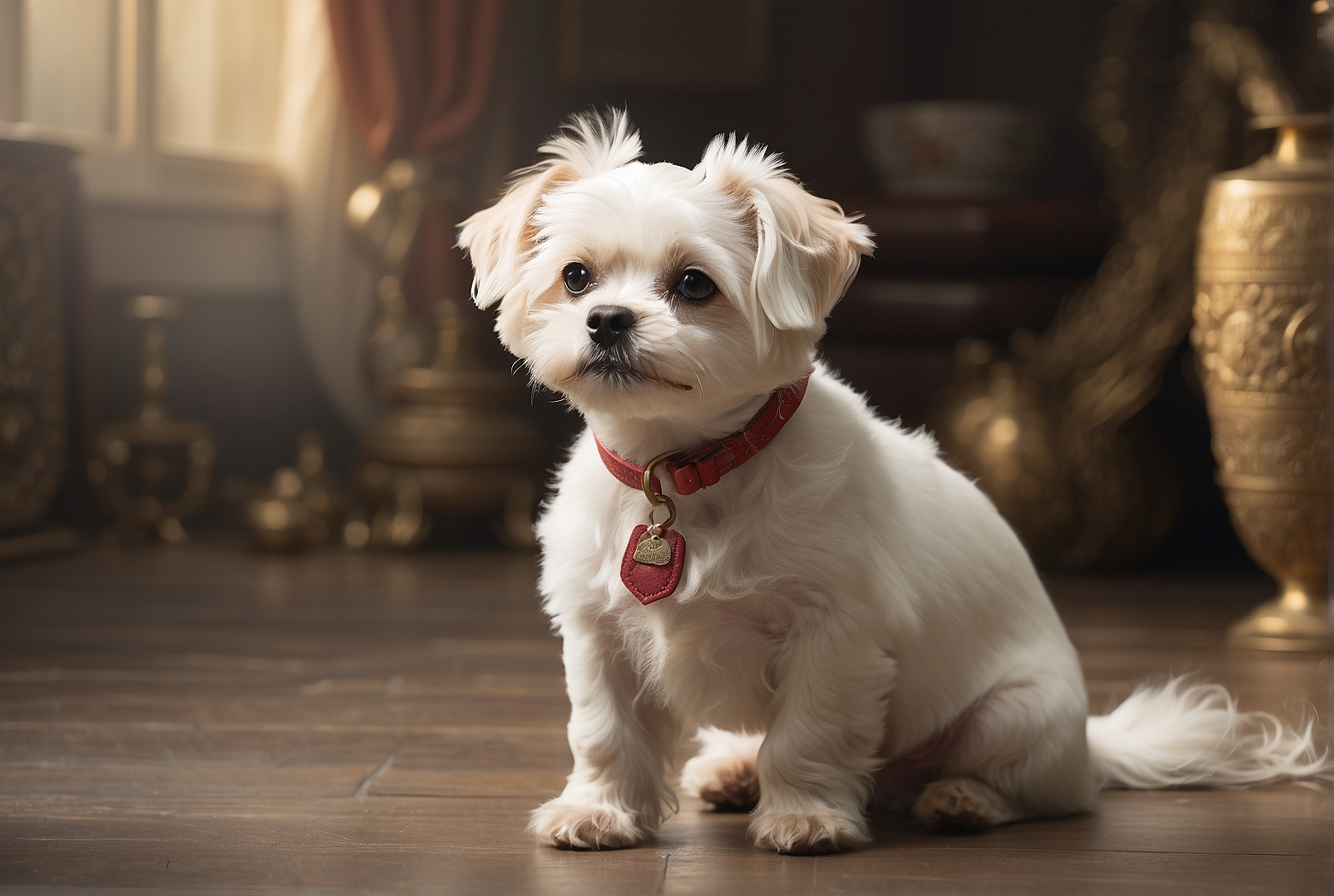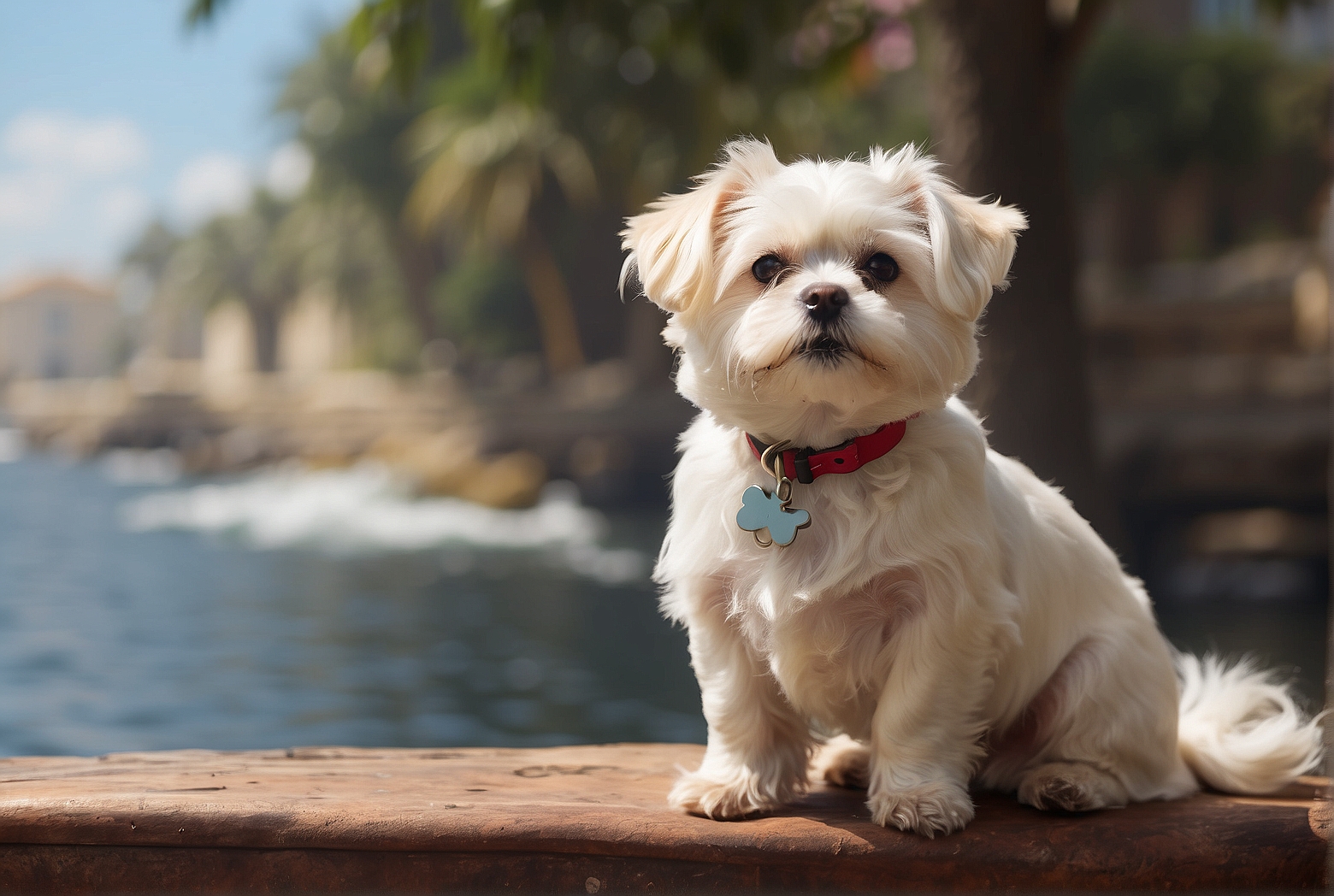If you’ve ever wondered about the length of a Maltese dog, look no further! In this article, we will explore the various factors that contribute to the length of these adorable furry companions. From their genetic makeup to their grooming routine, we will discover how to maintain the perfect length for your Maltese dog’s coat. Whether you’re a proud Maltese owner or simply curious about this beloved breed, you’re in for a treat as we unravel the secrets behind the length of a Maltese dog.
Physical Characteristics
Size
The Maltese is a small breed, known for its compact size. On average, Maltese dogs stand at around 8-10 inches tall at the shoulder. However, it’s important to note that individual dogs may vary slightly in height. Despite their small stature, Maltese dogs possess a strong and sturdy build, showcasing their resilience and agility.
Weight
In addition to their small size, Maltese dogs are also lightweight. The average weight range for a healthy adult Maltese is between 4-7 pounds. Just like their height, there may be some variation in weight among individual Maltese dogs. Factors such as genetics, diet, and exercise level can influence the weight of a Maltese.
Body Structure
The body structure of a Maltese is well-balanced and proportionate. They have a slightly longer body in comparison to their height, giving them an elegant appearance. Maltese dogs have a well-developed musculature, which provides them with the necessary strength and endurance for their size. Their bone structure is also delicate yet sturdy, contributing to their overall physical agility.
Coat Length
One of the most distinctive physical characteristics of a Maltese is their luxurious coat. The coat length can vary among individual dogs and plays a significant role in their appearance. Maltese dogs can have a long coat, medium coat, or short coat, depending on various genetic factors.
Tail
The tail of a Maltese is an important aspect of their physical appearance. It is covered in the same beautiful, flowing hair that adorns their body. The natural length of a Maltese’s tail is typically medium in size, reaching down to the hock joint. However, there can be variations in tail length among individual dogs. It is essential to understand the specific tail length of your Maltese and ensure its proper care and grooming.

Size
Average Height
The average height of a fully grown Maltese dog is typically between 8 to 10 inches at the shoulder. This compact size makes them an ideal choice for individuals or families living in smaller spaces, such as apartments or houses with limited outdoor areas.
Average Length
When considering the average length of a Maltese, it’s important to take into account their body proportions. While their height may range from 8 to 10 inches, their overall length, from the tip of the nose to the base of the tail, can vary. On average, Maltese dogs measure around 9 to 12 inches in length.
Comparison to Other Breeds
In comparison to other dog breeds, Maltese dogs are considered one of the smallest toy breeds. Their size is often likened to that of a small lapdog, making them highly portable and adaptable to various environments. Their compact size and adorable appearance make them a popular choice among dog lovers worldwide.
Weight
Average Weight Range
The average weight range for an adult Maltese dog is typically between 4 to 7 pounds. However, it’s essential to remember that individual dogs may fall slightly outside this range. Factors such as genetics, diet, and exercise play a significant role in determining the weight of a Maltese.
Factors Affecting Weight
Several factors can influence the weight of a Maltese dog. First and foremost, genetics play a crucial role in determining their natural body weight. Additionally, proper nutrition and a balanced diet are essential to maintain a healthy weight for a Maltese. Regular exercise is another essential factor that aids in weight management and ensures their overall well-being.
Body Structure
Proportions
The body proportions of a Maltese are well-balanced, contributing to their elegant appearance. Their slightly longer body in comparison to their height gives them a graceful and regal stance. The proportional body structure of a Maltese is one of the factors that make them stand out among other toy breeds.

Muscle Tone
Despite their small size, Maltese dogs possess well-developed muscle tone. This muscle tone provides them with the necessary strength and agility to excel in various physical activities. Adequate exercise and a balanced diet are essential in maintaining and enhancing their muscle tone.
Bone Structure
The bone structure of a Maltese is delicate yet sturdy. It provides them with the necessary support and strength to carry their body weight. Proper nutrition, including adequate calcium intake, is crucial for the development and maintenance of strong bones in Maltese dogs.
Physical Agility
Maltese dogs are surprisingly agile for their size. They possess excellent balance and coordination, allowing them to navigate through different terrains with ease. Their small size and agile nature make them well-suited for various physical activities, such as agility training or participating in dog sports.
Coat Length
Overview of Maltese Coat
The coat of a Maltese is one of its most distinctive features. It consists of a soft, silky, and flowing mane that covers their entire body. The coat is a single layer, without an undercoat, which gives it its luxurious appearance. The length of the coat can vary, depending on genetic factors.
Long Coat Length
Some Maltese dogs have a long coat length, which adds to their elegance and beauty. A long coat reaches the floor and requires regular grooming and maintenance to prevent matting and tangling. The long coat length is often seen in show dogs, where meticulous care is taken to maintain its pristine condition.
Medium Coat Length
Maltese dogs with a medium coat length have hair that falls halfway between the short and long lengths. This coat length provides a balance between ease of maintenance and the beauty of a longer coat. Regular brushing and grooming are still essential to keep the medium coat looking its best.
Short Coat Length
While less common, Maltese dogs with a short coat length do exist. These dogs have hair that is shorter than average, requiring less maintenance compared to longer-coated Maltese. Despite their shorter hair, these Maltese dogs still possess the same charming and lovable personality associated with the breed.
Influence of Genetics
The length of a Maltese’s coat is primarily influenced by genetics. The breeding pair and their respective coat lengths play a significant role in determining the coat length of their offspring. Responsible breeders carefully select pairs to ensure desirable coat characteristics are passed down to future generations.
Coat Care
Regardless of the coat length, proper coat care is essential for the well-being of a Maltese. Regular brushing and grooming help prevent matting, tangling, and skin issues. Professional grooming may be required to maintain a long coat, while shorter coats may only require occasional brushing to keep them looking their best.
Tail
Natural Tail Length
The natural tail length of a Maltese is typically medium in size, reaching down to the hock joint. This length adds to their overall balance and elegance. The tail is covered in the same luxurious hair that adorns their body, completing their regal appearance.
Common Tail Length Issues
While the natural tail length of a Maltese is medium, there can be variations and issues related to tail length. Some Maltese dogs may have a shorter or longer tail due to genetic factors or previous tail docking procedures. It is crucial to note that tail docking is a controversial practice and is illegal in many countries.
Tail Health
The tail of a Maltese, like any other part of their body, requires proper attention and care to maintain its health. Regular inspection for any signs of injury, infection, or abnormalities is essential. Keep an eye out for excessive itching, redness, or swelling, which may indicate a potential tail health issue.
Grooming of the Tail
Proper grooming of the tail is essential to keep it looking its best. Regular brushing and occasional trimming may be required to prevent matting and tangling. Additionally, paying attention to hygiene and keeping the area around the tail clean will ensure a healthy and happy Maltese.
Growth and Development
Puppyhood
During puppyhood, Maltese dogs go through significant growth and development. They start as tiny, fragile beings and gradually grow into their adult size. Proper nutrition, regular veterinary check-ups, and early socialization all contribute to ensuring a healthy and well-adjusted Maltese puppy.
Adolescence
Adolescence in Maltese dogs is a time of continued growth and maturation. Their physical features, including their height and weight, continue to develop during this stage. It is essential to provide them with a balanced diet, regular exercise, and mental stimulation to support their growth and overall well-being.
Adult Size
Maltese dogs typically reach their full adult size by the age of one year. At this point, their height and weight have stabilized, and they have reached their maximum growth potential. It’s important to note that individual dogs may have slight variations in their adult size, and genetics play a significant role in determining their final stature.
Growth Factors
Several factors influence the growth and development of a Maltese dog. Genetics is the primary factor determining their growth potential. However, proper nutrition, including a high-quality diet and appropriate portion sizes, is crucial to support their growth. Regular exercise and mental stimulation also contribute to their overall development.
Importance of Understanding Length
Understanding the length of a Maltese dog is crucial for several reasons. It enables you to provide the proper care and attention required to keep them healthy and happy throughout their lives. By understanding their length, you can make informed decisions regarding their nutrition, grooming, and exercise requirements.
Health and Wellness
Understanding the length of a Maltese dog helps you identify potential health issues related to their size. It allows you to monitor their weight, muscle tone, and overall body condition, ensuring that they maintain a healthy physique. Regular check-ups with a veterinarian and proper preventative care are essential for their long-term health and wellness.
Proper Care and Grooming
By understanding the length of your Maltese’s coat and tail, you can provide the appropriate care and grooming necessary. Different coat lengths require different levels of maintenance, and tail length may affect grooming strategies. This knowledge allows you to keep your Maltese looking their best and prevents any discomfort or health issues related to their coat or tail.
Physical Activities and Exercise
The length of a Maltese plays a role in determining their physical agility and exercise needs. Understanding their size allows you to provide them with appropriate physical activities that match their energy levels and capabilities. Regular exercise not only helps maintain their physical health but also contributes to their mental well-being.
Compatibility with Living Spaces
Maltese dogs are well-suited for living in smaller spaces due to their small size and adaptability. Understanding their length enables you to determine if your living space is sufficient for their needs. Whether you live in an apartment or a house with a small yard, providing a suitable environment is crucial to their overall happiness and well-being.
Myths and Misconceptions
Length and Temperament
There is a common misconception that the length of a Maltese’s coat or tail is directly related to their temperament. However, there is no scientific evidence to support this claim. A Maltese’s personality and temperament are primarily influenced by genetics, socialization, and individual experiences, rather than their physical length.
Length and Intelligence
Similarly, the length of a Maltese’s coat or tail does not determine their intelligence. Maltese dogs are known for their intelligence and quick learning abilities, regardless of their physical attributes. Their intelligence is a result of their breed’s characteristics and the effort put into their training and mental stimulation.
Length and Breed Purity
Some people falsely associate coat or tail length with breed purity. The length of a Maltese’s coat or tail does not indicate their level of purebred status. The breed purity of a Maltese is determined by their lineage and adherence to breed standards, which focus on overall appearance, temperament, and other specific breed characteristics.
Conclusion
Understanding the length of a Maltese dog is essential for providing the best possible care and nurturing their overall well-being. By embracing and appreciating the individual length of each Maltese, we celebrate the diversity within the breed. Whether your Maltese has a long coat, medium coat, or short coat, each variant contributes to their uniqueness and charm. Continued learning and research allow us to better understand the factors that influence their length and provide them with the best possible care. By embracing these characteristics, we can ensure that every Maltese dog lives a happy and healthy life, surrounded by love and appreciation.
